- News
- Reviews
- Bikes
- Accessories
- Accessories - misc
- Computer mounts
- Bags
- Bar ends
- Bike bags & cases
- Bottle cages
- Bottles
- Cameras
- Car racks
- Child seats
- Computers
- Glasses
- GPS units
- Helmets
- Lights - front
- Lights - rear
- Lights - sets
- Locks
- Mirrors
- Mudguards
- Racks
- Pumps & CO2 inflators
- Puncture kits
- Reflectives
- Smart watches
- Stands and racks
- Trailers
- Clothing
- Components
- Bar tape & grips
- Bottom brackets
- Brake & gear cables
- Brake & STI levers
- Brake pads & spares
- Brakes
- Cassettes & freewheels
- Chains
- Chainsets & chainrings
- Derailleurs - front
- Derailleurs - rear
- Forks
- Gear levers & shifters
- Groupsets
- Handlebars & extensions
- Headsets
- Hubs
- Inner tubes
- Pedals
- Quick releases & skewers
- Saddles
- Seatposts
- Stems
- Wheels
- Tyres
- Health, fitness and nutrition
- Tools and workshop
- Miscellaneous
- Tubeless valves
- Buyers Guides
- Features
- Forum
- Recommends
- Podcast
feature
8 reasons not to get disc brakes — find out the hassles before you switch
Disc brakes have become an increasingly important part of the road bike world over the past few years, but while the benefits of disc brakes are well documented, they bring with them challenges and problems too.
Here are some of the issues that we've experienced and heard about.
1 Disc brakes add weight
The all-up weight of a disc brake bike is higher than that of a rim brake bike.
Levers, brake callipers, hoses, fluid and rotors weigh more than an equivalent rim brake setup. Manufacturers often try to minimise the difference but don't forget that disc brake hubs are heavier too, and disc brake wheels are often built up with more spokes of a wider gauge, although the lack of a brake track means that disc-specific rims are generally lighter. The thru axles that are used with many disc systems are heavier than quick release skewers.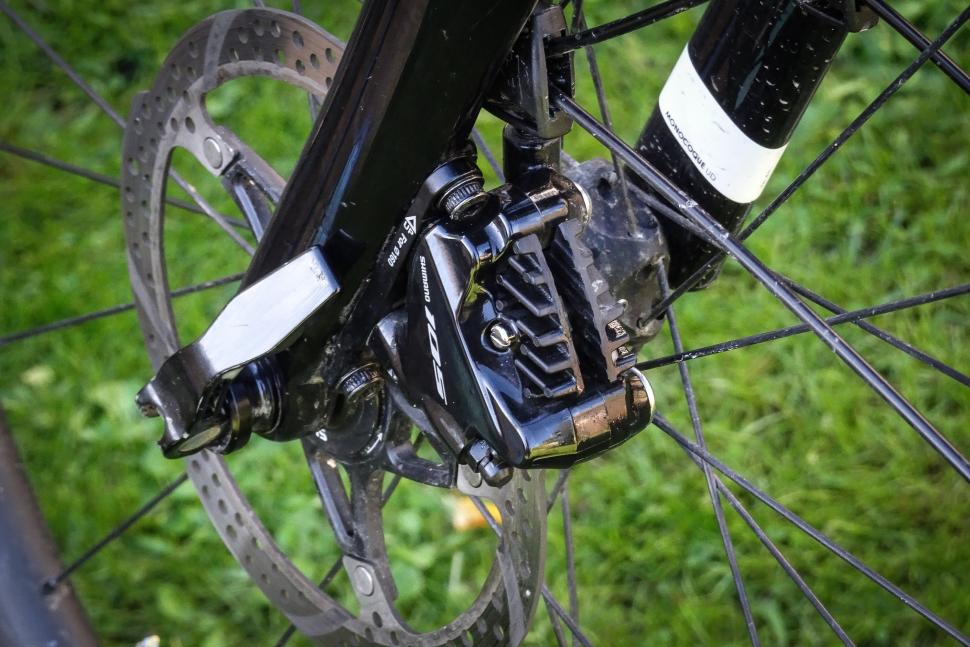
Read Everything You Need To Know About Disc Brakes
The weight difference isn't huge but it can often be around a pound over the whole bike when everything is taken into account.
2 Disc brake rub can be an issue
Early disc-equipped bikes borrowed the 74mm post mount standard from mountain bikes, where the brake calliper is simply bolted directly onto the frame or fork and adapters are used to accommodate different rotor sizes.
To try and improve the appearance of discs on road bikes, Shimano introduced its flat mount system. It’s an open standard that has been quickly adopted by other disc brake manufacturers. The vast majority of new disc brake road bikes are flat mount.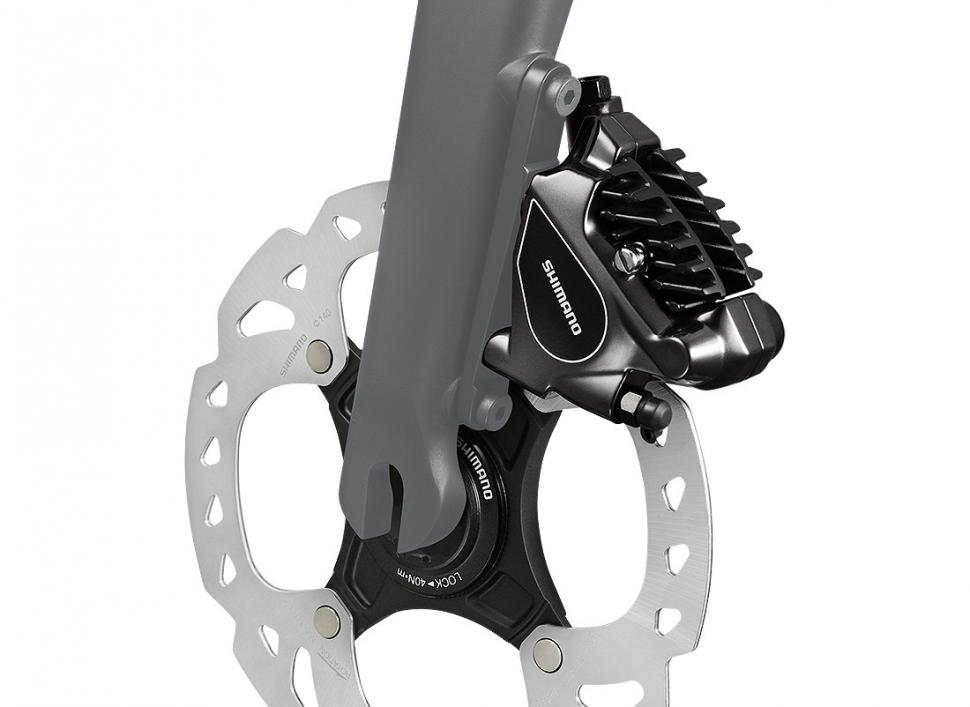
“[Flat mount offers a] smaller and more compact interface with the frame/fork for improved integration, reduced weight and better tool access for easier adjustment,” Shimano told road.cc.
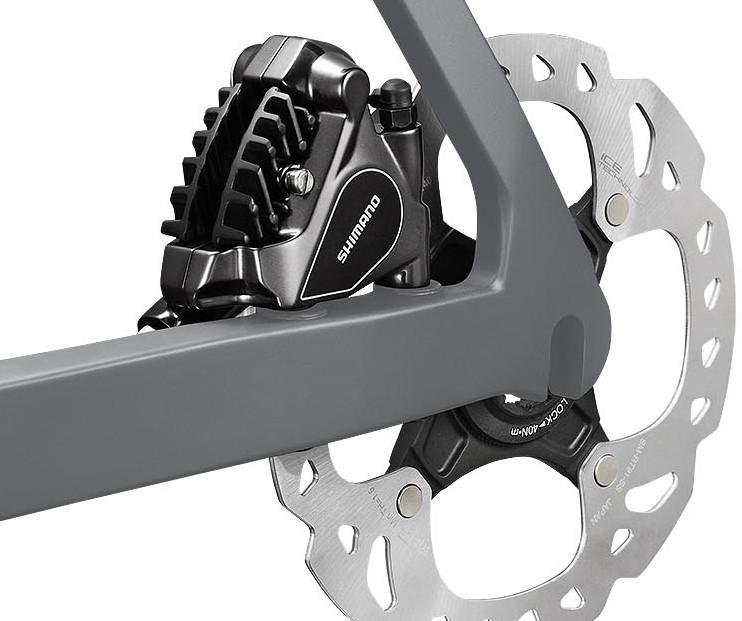
There’s no doubt flat mount disc callipers are smaller, better looking and lighter than the bulkier post mount callipers. The actual calliper mechanism is identical and there are no changes to the way the hose connects and the brake pads are installed. The key difference is in the way the calliper is mounted to the frame.
Where post mount callipers are bolted from above directly into the frame and fork, flat mount callipers sit flush with the frame and fork and the bolts are threaded in from below and directly into the calliper, pulling it down onto the frame. At the front, the calliper is fixed to a thin adapter which is bolted to the fork.
Depending on frame design and disc rotor size, post mount often needs a large and ugly adapter to provide the correct spacing over the rotor. On mountain bikes with many different frame designs and more rotor sizes in use, that versatility is a good thing, but the road market leans towards just 140mm and 160mm rotor sizes, for which flat mount has been designed.
We’ve had mostly good experiences with flat mount on the disc-equipped bikes we’ve tested, but there have been a couple of incidents of brake rub, and there's nothing more annoying.
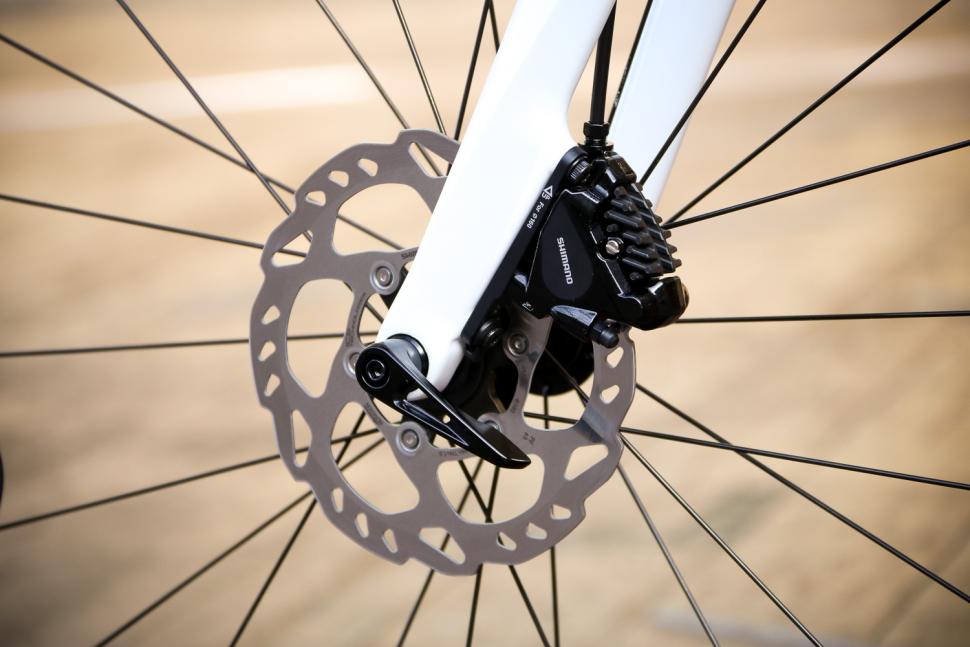
We asked Shimano about this problem and it told us that cleanly faced mounts are very important.
“As with post mount, a plane contact area (facing) always helps, as does the size of the disc (smaller is better). Centerlock rotors on good stable axle bearings (compared to 6-bolt rotors on lightweight hub axles) also help with alignment. The construction of the fork is also important (stiffness balance left/right),” said Shimano.
You'd hope a frame or fork manufacturer would make sure that the contact area was right, but in our experience this isn’t always the case.
Facing tools ensure the brake mounts on the frame and fork are smooth and level and provide perfect alignment. They're expensive and not really suitable for most home mechanics, although all good bike shops should be able to help you out here. Park Took does an adapter for its DT-5.2 Disc Brake Mount Facing Set and you can see it in action in this video.
The other solution to disc brake rub is to adjust the calliper on the frame/fork. With post mount it’s relatively easy: just slacken off the bolts, pull the brake lever and tighten the bolts to centre the calliper over the rotor.
“The range of adjustment for flat mount is the same as for post mount," says Shimano. "The difference is that the side-to-side adjustment is no longer on the calliper but in the slot hole instead. Shimano recommends that this hole is 4 x 5.2mm (+/- 0.1mm) but sometimes manufacturers don’t follow these recommendations. For the front calliper the adjustment is in the adaptor plate with the same hole dimensions.”
Not all manufacturers are adhering to the requirements as closely as they should. In many cases, the flat mount range of adjustment appears to be less than in post mount systems. We like flat mount but it does mean you are at the mercy of bike companies ensuring the mounts are manufactured correctly.
3 Disc brakes affect aerodynamics
Like any other external component, disc brakes affect aerodynamics. Some manufacturers have stated that the rim brake version of a particular bike is more aerodynamically efficient than the disc brake model, but it's not as simple as saying that rim brakes are always more aero.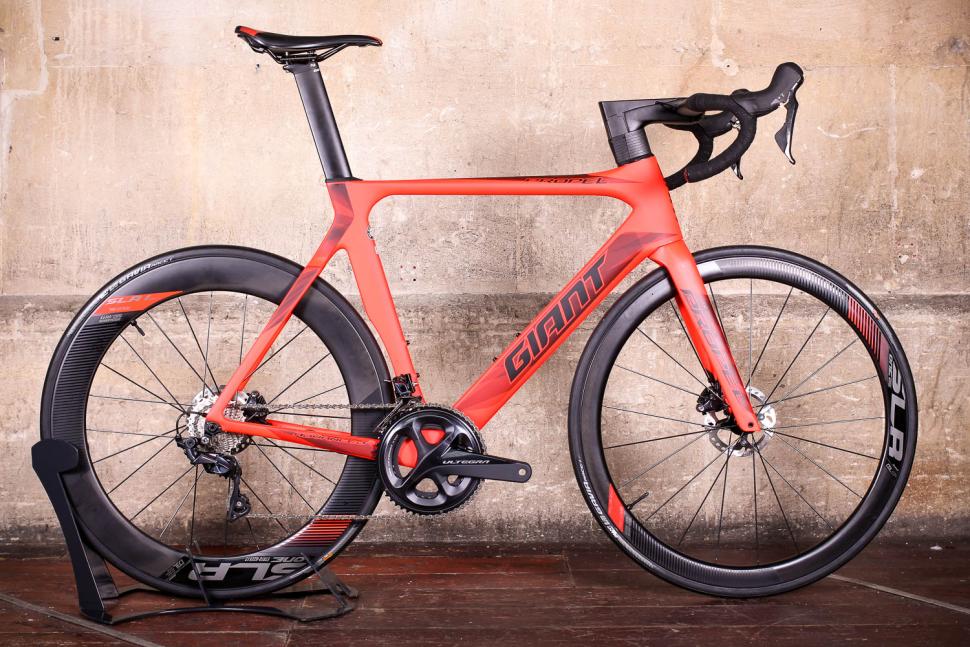
When Giant revealed its Propel Disc in 2017, for example, it said, "Engineers found that, with proper integration, a disc-brake design can actually improve aero performance compared to rim-brake configurations.
“This is because the location of traditional callipers (either in front or behind the fork crown/ legs) creates 'dirty' air'. Opening up the fork crown area (by placing the disc-brake callipers down at the hub) means that the air hitting the new disc-brake calliper has already been disrupted by the leading edge of the tyre/wheel. This effect is further enhanced by an asymmetric fork that helps smooth out airflow over the calliper.”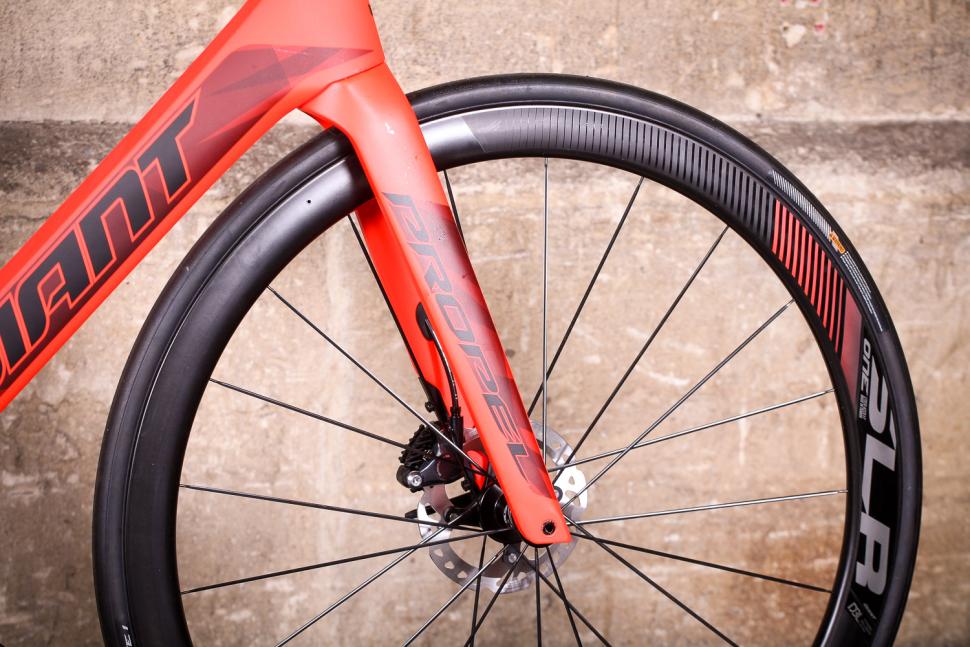
A handful of new aero road bikes, like the Cannondale SystemSix and 2019 Specialized Venge, are disc brake-only.
4 Choosing pads is a minefield
Switch to a disc brake bike and you'll eventually have to choose new pads... and that's a minefield.
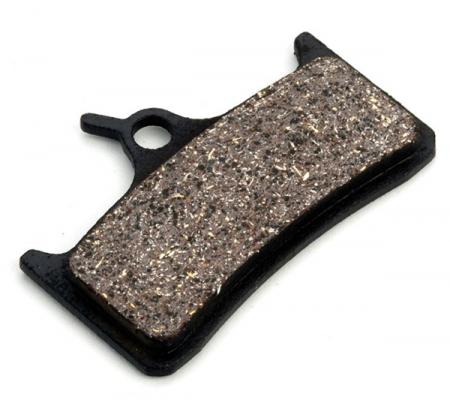
All pads are made by mixing various powdered additives with a binding agent and then squashing it all together at high heat and pressure to form a solid block on the backing pad. What's in the mix of powders has a major effect on the pad's properties.
Most new bikes come fitted with resin pads. They're made from non-metallic additives such as rubber, glass, carbon and Kevlar to provide an all-around pad that works for most people but isn't very durable under hard use.
Find out more about disc brake pads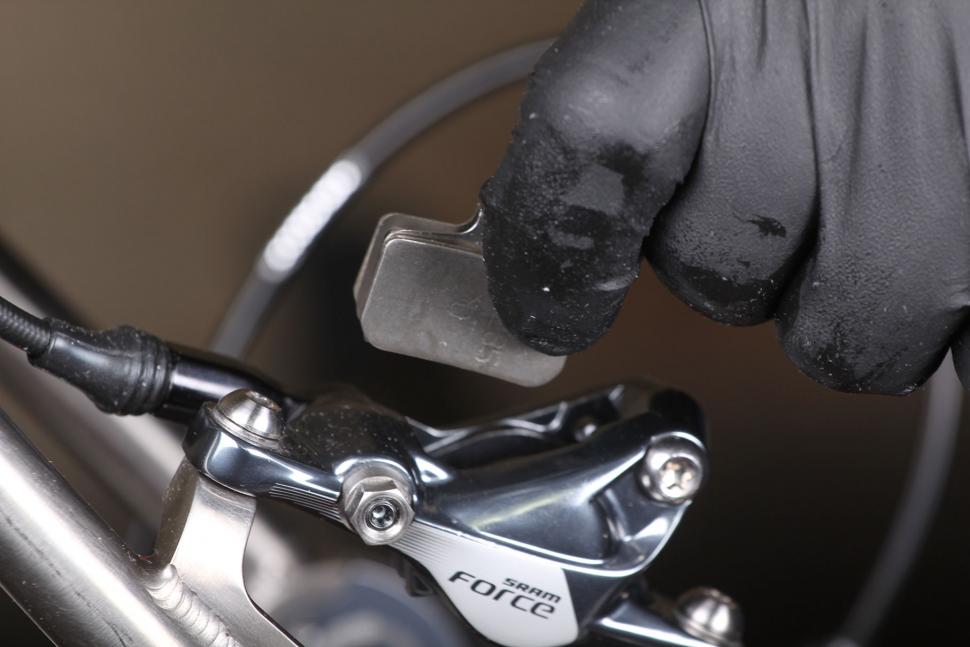
If you live anywhere hilly and/or ride in all weathers then you're probably better off switching to more expensive but much longer lasting sintered pads. Also known as metallic brake pads, these use a very high proportion of metallic fillers such as copper, steel and iron. They provide strong, effective braking at high pad temperatures although their bite can be poor when they're cold and they'll wear out your rotors quicker than resin pads.
5 You need to bed in new brakes
New disc brake pads and rotors don't immediately perform to their full potential – they need bedding in first. This is a process that distributes pad material over the rotor to increase the friction, and maximises the contact area between the two surfaces.
Here's how to look after disc brakes to get the best performance out of them
Thankfully, bedding in is pretty straightforward. Here's SRAM's advice:
"Accelerate the bike to a moderate speed and then firmly apply the brakes until you are at walking speed. Repeat this process 20 times. Then accelerate the bike to a faster speed and apply the brakes until you are at walking speed. Repeat this process 10 times. It’s important that during this process you never come to a complete stop or lock up the wheels at any point."
This will improve the performance of your brakes massively and prepare them for normal riding.
6 Maintenance involves a new set of skills
Chances are that you know how to adjust rim brakes and swap the pads, and probably how to change the cables too. You might have been doing it since you were a kid. Depending on your cycling background, disc brake maintenance might be entirely new to you.
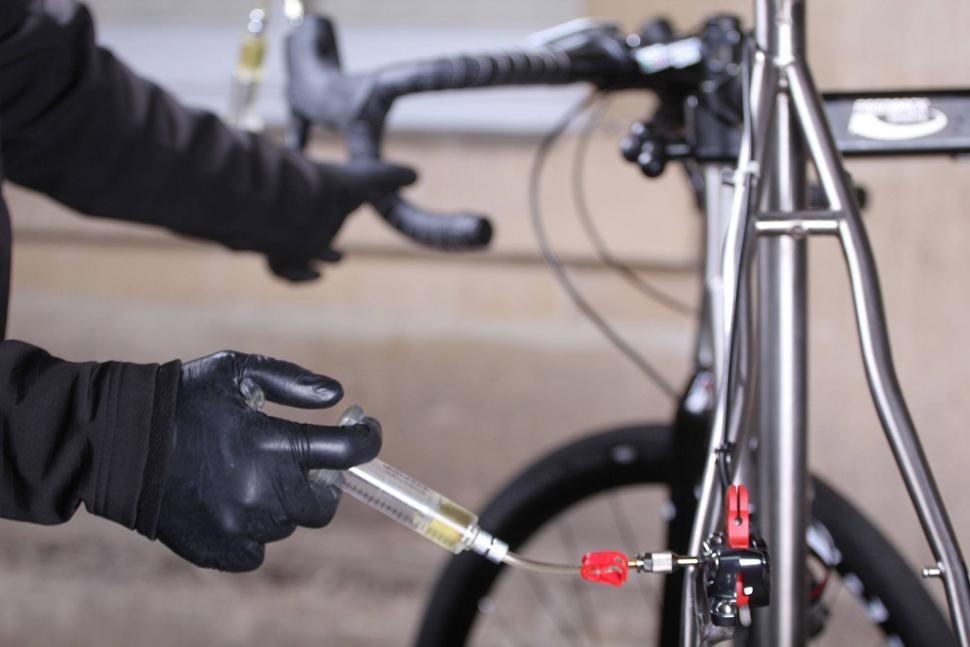 One issue you could encounter with hydraulic disc brakes is a soft and mushy feel because of air in the system. This requires bleeding and means either a trip to a bike shop or shelling out on a bleed kit. Each manufacturer has its own bleed kit. Shimano and SRAM, for example, use different techniques and fluid.
One issue you could encounter with hydraulic disc brakes is a soft and mushy feel because of air in the system. This requires bleeding and means either a trip to a bike shop or shelling out on a bleed kit. Each manufacturer has its own bleed kit. Shimano and SRAM, for example, use different techniques and fluid.
Bleeding a hydraulic disc brake system isn't the most onerous of tasks but you will need to get the hang of it while following a guide or watching one of our videos.
7 They can squeal!
It's true that rim brakes can squeal but we reckon that disc brakes are worse offenders.
The most common cause of disc brakes squealing is contamination of the rotor or pads. You have to be careful when using spray lubricants on a bicycle with disc brakes, or avoid them altogether.
Find out how to stop your brakes squealing
“Cleaning your rotors regularly with a specific (oil-free) disc brake degreaser is a good way to avoid squealing brakes," says Shimano. "Cleaning your pads too can help quieten things down — you can try some sandpaper or grinding the pads — but if the grease has soaked through the pad, you might need to replace them. Don't use a degreaser or chemicals on brake pads, though.”
It’s harder to clean disc brake pads than rim brake pads, largely because you have to remove them from the bike in the first place.
What's the best way to clean disc brakes?
Squealing pads can also be a sign that the pads are worn out. It's a little more tricky to take a close look at disc brake pads than it is with rim brake pads, although taking the wheel out can make the task easier.
8 Rotors wear out... eventually
One of the advantages of disc brakes is that they don't wear out the rims of your posh carbon wheels, but don't forget that you will wear out the disc rotors. Thankfully, rotors aren't particularly expensive.
Different brands give different minimum thicknesses for their rotors (the figure is often printed on the rotors). Go beyond that limit and things become dangerous, so keep an eye on 'em.
Mat has been in cycling media since 1996, on titles including BikeRadar, Total Bike, Total Mountain Bike, What Mountain Bike and Mountain Biking UK, and he has been editor of 220 Triathlon and Cycling Plus. Mat has been road.cc technical editor for over a decade, testing bikes, fettling the latest kit, and trying out the most up-to-the-minute clothing. He has won his category in Ironman UK 70.3 and finished on the podium in both marathons he has run. Mat is a Cambridge graduate who did a post-grad in magazine journalism, and he is a winner of the Cycling Media Award for Specialist Online Writer. Now over 50, he's riding road and gravel bikes most days for fun and fitness rather than training for competitions.
Latest Comments
- HoarseMann 3 hours 21 min ago
Not quite the same scenario, but has some similarities......
- HoarseMann 3 hours 40 min ago
“It all happened so fast,” the bus driver said in his statement. “To my horror I saw a male laid on his back with a mobile phone on his chest and...
- chrisonabike 3 hours 46 min ago
I agree she might have chosen a different cycle/clothing combo there. Still, if you're riding with a long coat - or indeed a skirt, or bell...
- wtjs 4 hours 26 min ago
no one cares enough to fix it...
- wtjs 4 hours 34 min ago
I won't be getting anything on Friday...
- I love my bike 6 hours 27 min ago
It's in the land of the sidewalk, for better or worse, that driving 'right of way' does exist. . . and many other things they can keep as well!
- IanGlasgow 7 hours 39 min ago
CHPT3 is in receivership. Their website replaced by this notice. https://chpt3.com/
- Paul J 8 hours 7 min ago
So Froome basically chickened out on actually trying against Contador?...
- Supervet 8 hours 25 min ago
I have started holding my breath for 5 x 30 seconds, that increases EPO, rebreathers not required....
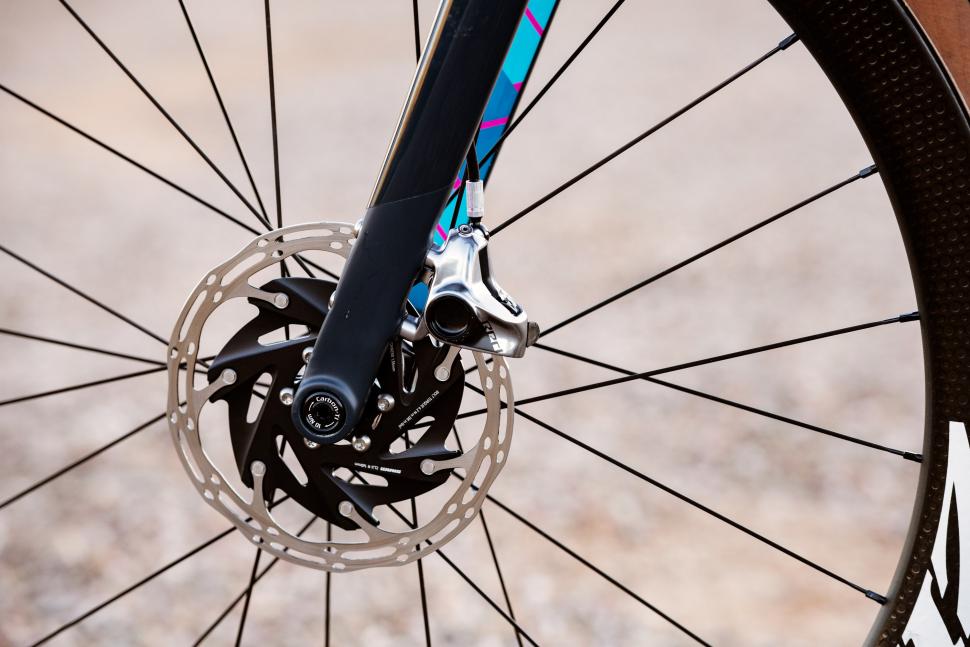
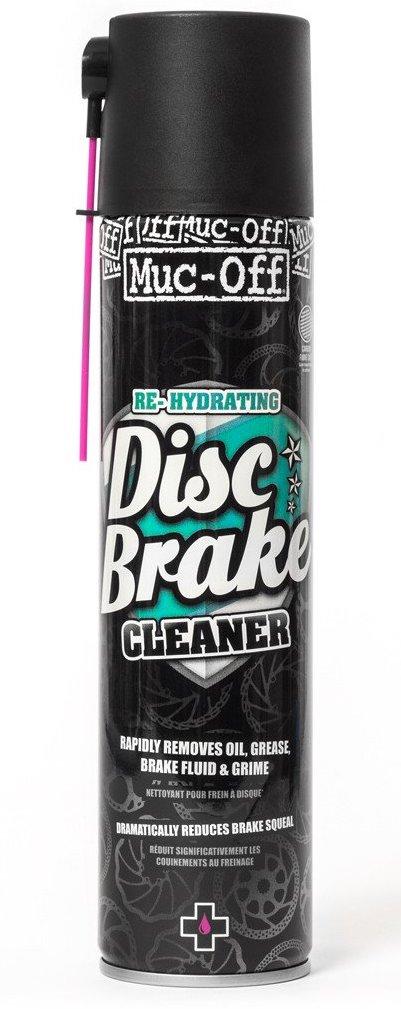
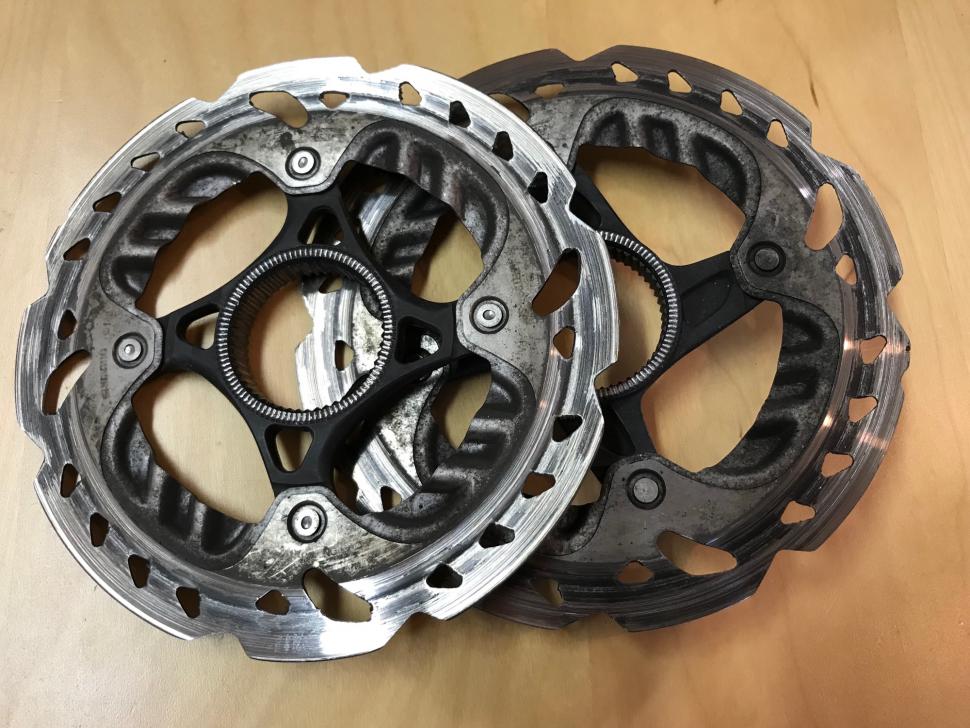
Add new comment
206 comments
decent rotors, like Ultegra for example, are 50 quid each. Good luck with your 11 pound rotors, stay safe out there
they were Shimano... now a tad more expensive:
https://www.wiggle.co.uk/shimano-slx-203mm-6-bolt-disc-rotor/
God, I hope Shimano know how to make disc rotors!
Even if I paid £50 for 'decent' ones can you still show me where to buy two 'decent' rims and two complete wheel builds for £100?
My last purchase of disc rotors cost £22 for two. Please show me where to buy two new rims with a complete rebuild of the wheels for this price. Silly statement.
The point is, you wear out 10 disc rotors at least within a lifetime of an alloy rim.
Ride both rim brakes and discs year round and then compare. I do and I can tell you that rims wear as fast if not faster that discs and with a pair of cheap wheels coming in at £100 a pair it's way more than the cost of rotors.
It's not really a fair comparison to say 'if you keep them clean rims last for 30,000kms' since if you only ride in the dry discs will last forever as well.
That's because carbon rim brakes don't work in the wet so no friction to wear anything.
Please tell us where to get cheap rim and wheel rebuilds. I'm fed up with new wheels every 6000 miles.
Much the same a rim brakes then. I'd rather that grit was wearing my cheap discs than my expensive rims.
Clearly, you haven't ridden the latest generation of carbon rims/pads. ENVE SES in particular are quite good in the wet and Zipp's latest brake track isn't far behind. Now, please tell us how many miles you log per year in the wet (on a race bike, not a commuter) such that this poor braking you speak of is a major issue for you. If you're like the majority of cyclist, if it's raining, you're inside on the turbo.
Wow there's a few sweeping statements there.
I ride 60 miles 3 times a week come rain or shine - typically about 9000 miles a year.
Don't commute and don't have a turbo.
When and how much I ride is not really revelant though.
You're are right on one thing though - I don't have carbon rims but others in my club don't speak highly of their wet weather braking.
My mountain bike disc brakes had annoyed me for so long I dumped the Avids in December and put Hope brakes on. They are better so far but it was a lot of work trying to get the front caliper set so that there was no rubbing. I haven't dared to take the front wheel out and put it back for fear of it rubbing again because that always happened with the Avids.
Now, it just so happens I'm looking at getting a new bike for touring (I want to try out titanium) and have already been talking to a supplier. Over the last couple of days I was thinking, despite my negative experience with my mountain bike, I should go for discs now that so many are talking about how good they are on road bikes and then this report comes up and I read Nick T's comment. Now I'm thinking sod it stick to rim brakes, on my road bike the campags on my shamal rims provide all the braking power I need.
The worrying thing is, if I spend a lot of money on this new bike and the disc brakes caused problems, I would be mightily pissed off!
Avids (elixirs) are fine while they work, once they start playing up they are complete crap, just throw them in a bin and buy Shimano. Odd minor issues (pad contamination when unused) but no DOT fluid to worry about and they work great. I also have mechanical disc on my cross bike (which work perfectly and are a doddle to adjust). But to be fair, I still use rim brakes on my road bike but only because disc werent an option when buying it.
Nearly all of these things are either non-issues or also apply (but worse) to rim brakes. The main provisos are, stay away from cable disc systems as they are generally crap (and people then assume the same issues will afflict hydro systems), and yes, flat mount can bring a whole load of issues, usually only on a new bike though. Rim brakes bring a whole load more issues for the average rider I think; they destroy the wheel, they can easily be set up in a dangerous fashion (typically the wrong pad compound for a carbon wheel, or cheap hard pads which wouldn't stop anything, or the tolerances and pad alignment and sync are all out, or crap cables which stop the brake being effective... And so on ). A decent hydro system works out of the box as the pads are automatically correct, and it only needs bleeding once in a blue moon if at all, and is overall cheaper to run as you only should need to replace either a rotor or a set of pads, as opposed to a whole wheel rim which then necessitates a new wheel or a hand rebuild. Also, most importantly, it is safe to use in varying conditions and actually stops you in varying conditions, so you dont need to be inducted into the mystical way of the roadie before using them.
Light the fires! Here we go!
Just came back from a ride on my "summer" rim-braked bike, after exclusively using disc bike bikes since (I reckon) end of November. Got to love a lighter bike, no brake rub and the rim brakes provided great control. Don't me wrong, I like my disc brakes, but today's ride was a hoot...Didn't even miss my 30mm tyres!
They’re noisy, they’re a faff, and they’re entirely unnecessary on a race bike. Cracking for off road, gravel, adventure and commuting though, despite the noise and the faff
But still absolutely not necessary.
Discs for mountain biking IF you have to go hell for leather all the time and get a lot of mud clogging but then you've got another set of problems to overcome, but you can do mountain biking on cantilevers or Vs in any case without problems, in fact Tom Pidcock rode to the 2017 junior world cyclocross title in 2017 on cantis in fairly icy/snowy/muddy conditions and the crashes were down to limitations in tyre grip not braking power so that's proof enough that you don't need discs for any discipline.
I've commuted on/off for 34 years and ridden utility since I was 13 non stop even when I was a car commuter in the 90s/early 00s. Originally started on chrome steel rims and leather pads plus very bog standard side pull calipers, my current daily I've used for off road/gravel, commuting, touring incl fast descending in the alps, in all that time with any bike I've never not had enough braking. Even doing downhill on my old steel MTB. It's about judgement, all discs do as with other braking and tyre improvements is allow you to go faster and brake later, they don't really improve safety because if you're jusding correctly then whatever braking you do have it should always be enough unless you make an error or there is an external force out of your control.
If people want to use discs that's fine but it won't increase safety or make your ride any more exciting.
Nor is a seat, I bet you have one though.
Your legs must be tired by now - why did you pedal power your car?
Are you trying to compare two differing brake types to seat belts, now I know you're a troll!
And to answer your question, no I don't have a seatbelt now and haven't for 16 months now and when I did have one fitted in the vehicle I never ever used it in the sense of what it supposedly offered me over not having one. I commuted in and around London at peak times for a decade, sometimes 4 hours a day. Drive to the conditions, read the road, take account for fuckwittery, take account fo the vulnerable, don't push things to the max ... EXACTLY the same as riding a bike and hence why taking into account that seatbelts do as much harm through risk compensation and the internal injuries they cause when seatbelts are needed to retain people in their vehicles, as they save that they aren't necessary actually.
Amazing how millions of people managed not to die whilst driving with tiny drum brakes, no power steering, 12/13" tyres, no crash cells, airbags, traction control etc etc. That was what my first car was and the second.
So called improvements in tech do not equal necessary or safer and in fact not improvement but a shift in taking responsibility for ones actions and how you think.
Oh dear, if only you'd read the actual words before your rant about what a fantastic driver you are...
Seat, I said seat.
In response to you saying disc brakes aren't absolutely necessary. Despite the fact that nobody claimed they were, the point I made is that a seat isn't absolutely necessary but most will have one.
Now, feel free to rant...
I have 140mm discs front and back on my Strael with Shimano hydro brakes. The brakes are phenomenally powerful as is, I cannot see ANY need for 160mm rotors at all.
Bigger discs don’t give you more braking power, they do give you more heat dispersion though. One of the issues discs have is that heat can build and a rotor doesn’t lose heat as quickly as a rim. Hence a heavier rider on hilly terrain might be better off with a 160f/140r setup. Shim have gone a long way in heat management tech however, Sram recommend 160f I believe.
Basic physics says yes they do - the bigger the diameter the bigger the braking force,
Brake disc size has no effect on braking power. If you dont care if your brake discs overheat then get the smallest and lightest possible. If however you want to be able to apply your brakes for as long as possible before they overheat and fail, you will want the biggest discs possible.
You must see that your first statement indirectly contradicts everything else you said.
Even aligning calipers so they look like they don't rub, I can't believe that the majority of calipers don't rub to some miniscule amount. I can see clear daylight between the pads and rims on my rim brake bike. I *think* I can just about see clear daylight between my caliper pads and disc rotor on the road bike but it seems to be very fickle/susceptible to contact. That's with thru axles too!..... So there must be some marginal losses there surely? When everyone is talking about watts saved from going aero or watts saved using the right chain lube, surely a little more pad clearance wouldn't go amiss?
And yes I race, so it does matter to me when I'm racing. Not so much on a training ride though.
The worst thing about disc brakes is that mechanical calipers, due to internal friction and flex, are not as powerful as hydraulics. This would not be too bad if manufacturer did not insist on mounting puny 160mm rotors witht them. Even worse is that flat mount does not have adapters for bigger rotors.
They are right to do so in most cases. If I can lock up a soft compound 700x40c tyre at low pressure with 160 mm rotors and TRP Spyres with cheap discs, there's really no reason to go bigger on roadbikes.
FYI though, there are manufacturers that move the mounts a bit so you have the choice between 160 and 180 rotors (e.g. Poison Cynit integrated).
If you get cheap mechanical calipers though you're in a whole 'nother world of pain because of the way they clamp on the rotors...
Is this the front wheel ?
I agree that 160mm is enough at the back.
I've had 2 bikes with Spyres and neither inspired me much with the braking.
If "compressionless" mechanical brake housing was not a fortune I'm sure it would be supplied on mech disc equipped bikes more often than never. Running mech discs without it is a waste IMO. It's night and day difference.
Pages